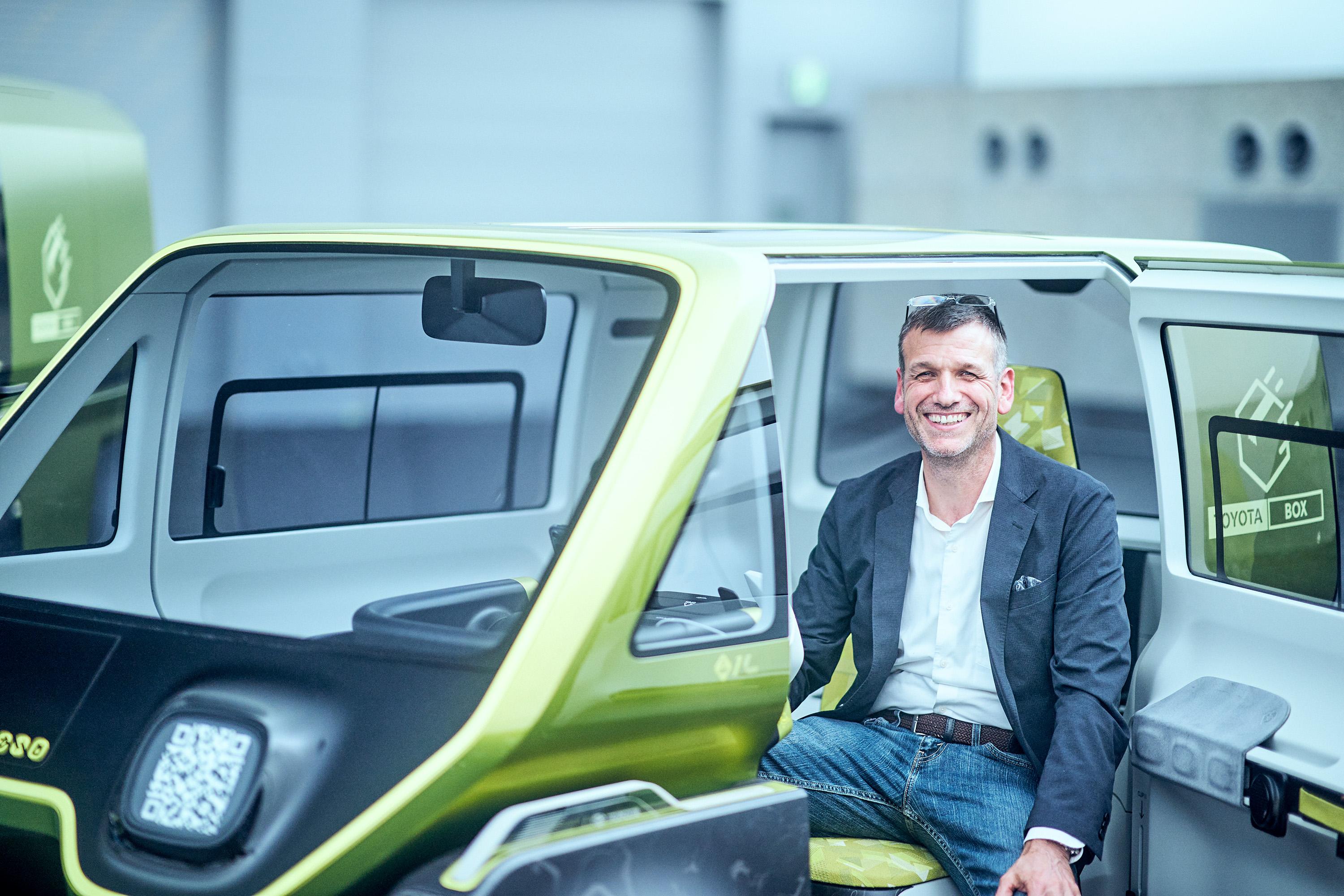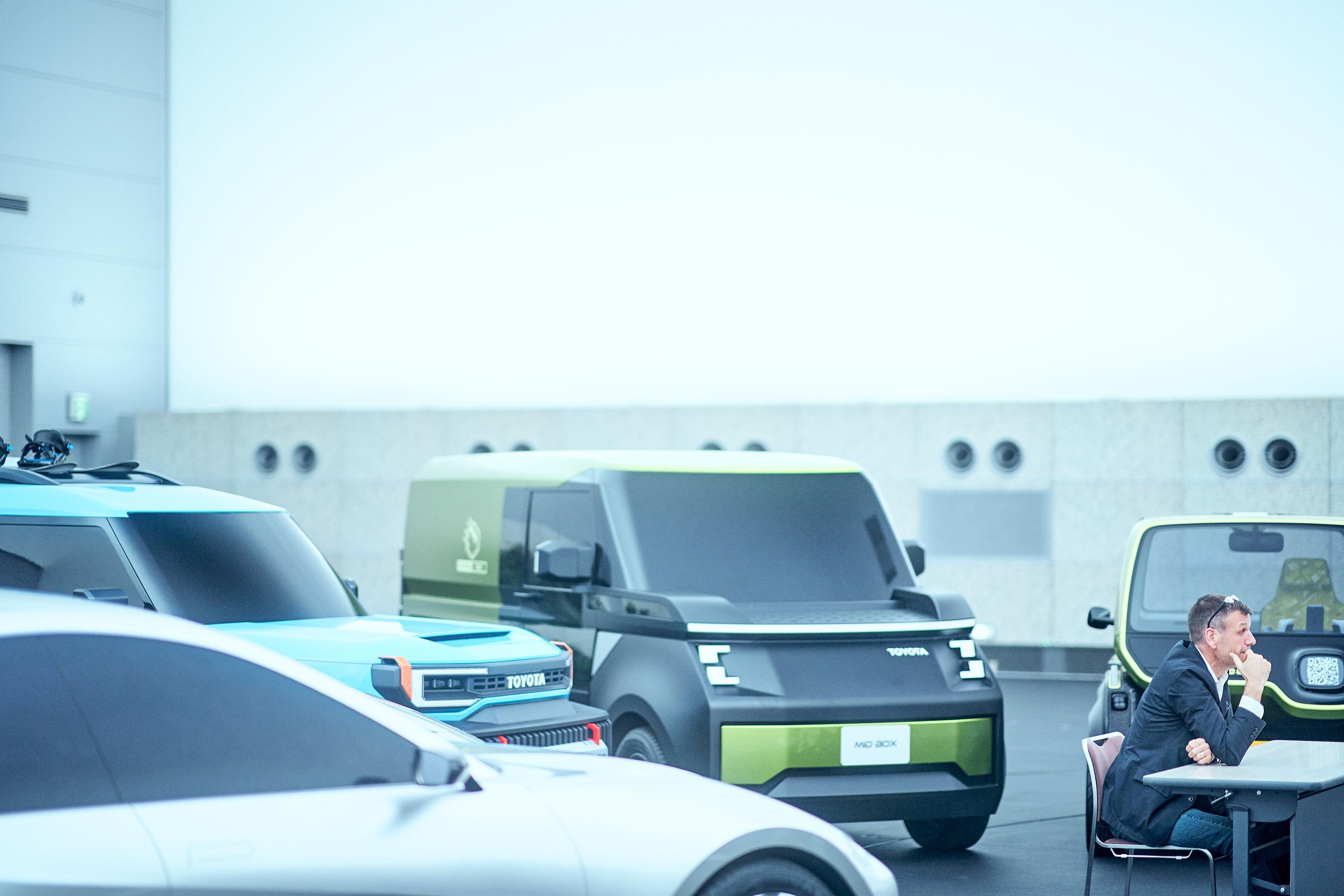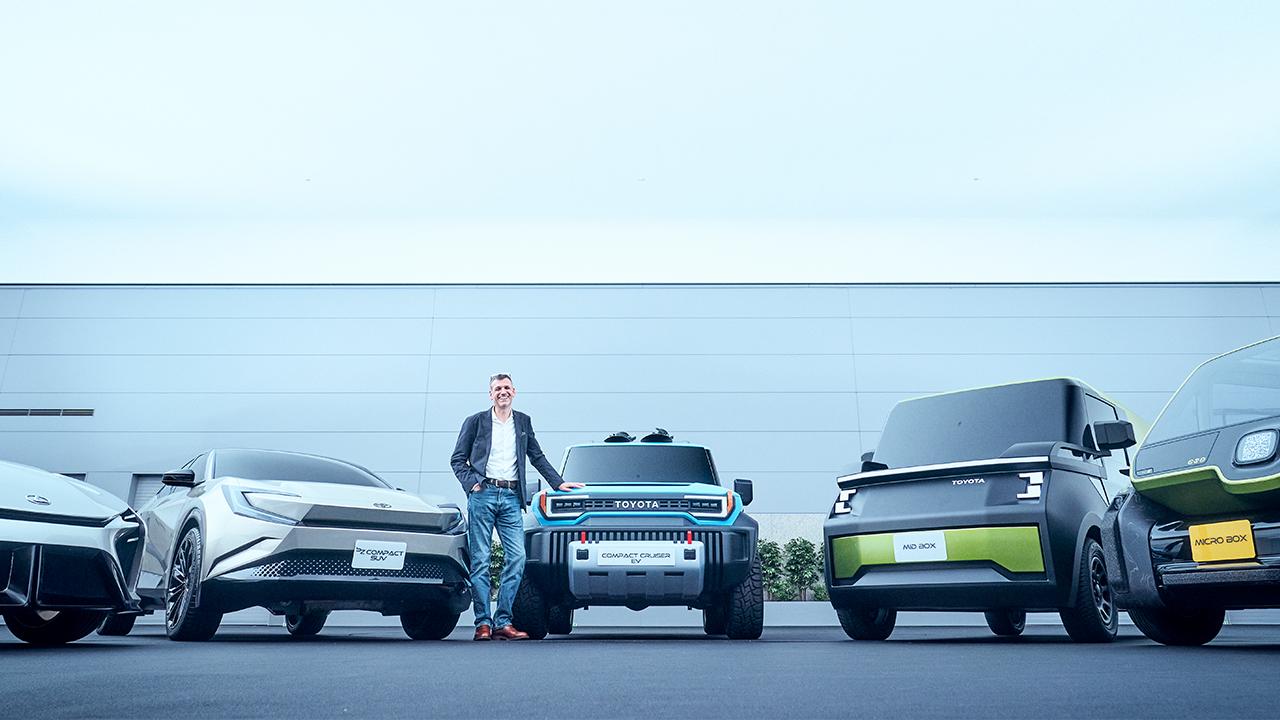What makes a good car? Of course, design is an essential element of any answer to that. So, then, what does design mean for Toyota and its customers? These questions are ones that designers continue to address.
This article features an in-depth interview with Global Design Head Simon Humphries. Here, he offers insights into his extraordinary career, the essence of design at Toyota, and the new chapter of the Crown story.
Lack of automotive experience is no barrier
A native of the United Kingdom, Humphries was good at drawing as a boy, and when he was thirteen, one of his schoolteachers recommended he consider becoming a designer. That inspired his initial interest in the field.

Humphries
I studied design from that point on, including at university, and in 1998 I won a design competition sponsored by a Japanese corporation. Their invitation to visit Japan was a turning point for me. I remember being fascinated by Akihabara, which was much more chaotic than it is today.
After that first visit to Japan, he returned to the United Kingdom to work at a design firm but found himself unable to forget his Japanese experience. So, in 1989, he returned and joined a design firm in Nagoya, where he worked for six years. Up to that point, he had specialized in product design rather than cars.
Humphries
Even as I kept working in product design, it was always in my mind that I wanted to try car design.
I didn’t have any automotive expertise, but I felt like product and car design both shared the same elements, so I gave Toyota a shot and they let me join. I remember to this day how happy I was.
That was in 1994, and at the time there were no other non-Japanese designers in Toyota’s Japanese design division.


Humphries
The head at the time explained that the reason for hiring me was they wanted staff with experience in overseas design culture. They also needed someone with computer graphics knowledge. Luckily, I had both.
Two essential viewpoints for Toyota design
What exactly does Humphries do now, as the global design head? He shared two essential perspectives for Toyota’s car designers.
Humphries
One is Toyota’s perspective, which looks at where the company is headed and what existing value it can offer. Naturally, President Akio Toyoda’s way of thinking greatly influences that.
The other viewpoint is that of the customer. In other words, the perspective of what the market demands.
The designer always stands somewhere between those two. You have to look at both sides, understand their needs, and give shape to the message. That is the designer’s job.
Clearly envisioning the future is also another vital task for designers.
Humphries
Akio has a clear vision of where to go. His message is not “do this thing,” but more “go in this direction.”
That direction then becomes our task. Designers have to be able to see that direction, understand it, and give it shape. Following that full sequence is vital.
That direction I’ve been talking about is, in many ways, like a dream. Some dreams are hazy and undefined, while others are clear but hard to reach. We designers must keep our eyes open and look in every direction to be ready to pick up on all those kinds of dreams.
Designers have to be able to visualize the future while considering the company strategy, the top management’s intent, and market demands. Design thinking is a method of organizing and orienting indistinct things, and that is precisely the designer’s role as Humphries describes it.



Why Toyota doesn’t use a uniform design
Humphries
Things like rounded or sharp corners are styling issues rather than design. They might broadly fall under design, but they’re really only on the surface. The true essence of design is problem-solving, and the most important part of problem-solving is deciding on a concept.
Take, for example, the just-announced new Crown. Akio told me, “If we want to make the Crown a car relevant to the future, I believe it’s about time for a drastic change.” That was the direction he showed.
He also added, “The 15th-generation Crown running today is like the fifteenth and final generation shogun of the feudal Tokugawa period. We need to open a new era for the Crown like the Meiji era that came in after the Tokugawa.” Those words served as the foundation for the next Crown.
It was clear that he wanted a huge change. With that direction, the designers could boldly take on the challenge.

Although Akio’s words—drawing a comparison with Japanese history—were abstract, Humphries recalls that “in a sense, they contained incredibly specific directions.”
Humphries also stresses that addressing diverse needs is essential, not only for the new Crown, but for Toyota’s design across its full lineup.
Humphries
Using a uniform design for all cars is one way to handle brand management. At Toyota, though, the focus is on whether or not each car will become a one-of-a-kind experience for customers.
For customers, who are choosing one car from all the options available, isn’t it better to be able to find the best car for them, rather than looking at a lot of cars that have the same design? Our goal is for customers to feel happy having chosen a car.

As values continue to diversify, Toyota’s car making also offers optimal solutions for all. Humphries seems to feel that is an extremely Japanese methodology. He explains it using the example of beer in shops.
Why do stores in Japan stock 135ml beer cans?
Humphries
The same brand of beer is available in multiple sizes at Japanese stores. 1L, 500ml, 350ml… and the smallest is 135ml.
Why is that? Because there are people who want each one. At the same time, it is also inspired by creative ideas for new ways to drink with those sizes.
In other words, Toyota’s designers explore vehicles that match a variety of customer needs, including hobbies and lifestyles, while still being mobility tools.
Humphries
Toyota is incredibly serious when thinking about users. I want people to understand that. Toyota isn’t just making cars it wants to, nor does it just do what market research says; it is a company with its own clear purpose.
And Akio is a vital part of maintaining a delicate balance between promoting purposeful car-making and valuing marketing.
That has been made possible by the car-making reform in the Toyota New Global Architecture (TNGA), which pursues both ever-better design and engineering.

The difference of having a car guy president
Humphries
The most important factor for us is that Akio is not only the head of the company but a car guy himself.
If top management is interested in car design and offers comments on the direction the car should take, such as “make driving feel more powerful” or “make it more capable on a circuit,” we can find new issues and insights. Clearing those issues can help bring design to the next level.
“It’s fine if there are no clear answers,” Humphries repeated over and over. Rather than sending designers out to build a house on sand with no solid foundation, Toyota creates designs through a constant exchange of ideas.

Lastly, Humphries shared the difficulty of the designer’s role.
Humphries
Design visualizes the future. Once a car hits the world, it is already a thing of the past. To be perfectly honest, it can be an emotional strain.
That’s because we have to take a critical look at our creations once they’re released to find points of improvement. Otherwise, we could never take another step forward. But believe it or not, that is the fun part of car design at Toyota.

Simon Humphries, Head of Design at Toyota Motor Corporation
Born and educated in the UK, he started his career as a product designer in 1988 before joining Toyota Motor Corporation in 1994.
At first, he worked in advanced design and in 2002 played a leading role in establishing and implementing the Toyota (Vibrant Clarity) and Lexus (L-finesse) design philosophies.
After managing various projects in both advanced and production design, he was appointed president of ED2 (Toyota European Design Development), where his team spearheaded various projects to define Toyota’s transformation to a mobility company.
In 2018, he was assigned to the role of head of design, overseeing both the Toyota and Lexus brands.











